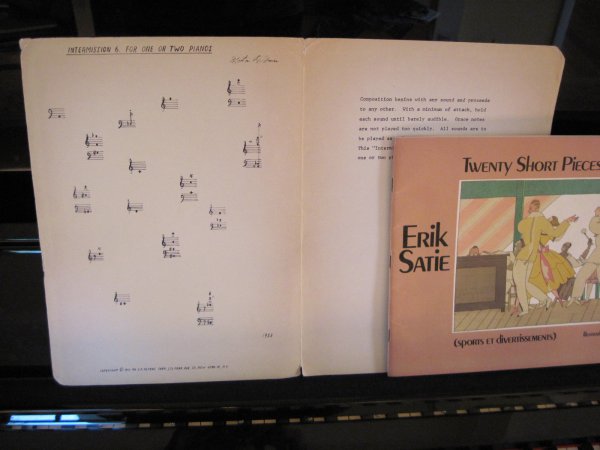I practice just about every day, focusing on one or two pieces that I want to really be able to play (right now it’s a Rachmaninoff prelude). But on Sundays I take time to just play, reading through various things that strike my fancy. I’m noticing the difference between “practicing” and “playing” and realizing that I need to have some space for both of them. It can be really lovely to sit down on a sunny Sunday morning after having breakfast, coffee, and the newspaper and to sightread things.
I was late getting to what I call my “freestyle” session yesterday, so I missed the sunny morning bit. Plus I had to put the practice mute on for part of it so as not to disturb Frances’ phone call. But it was still a fun tour:
- Johann Sebastian Bach: The well-tempered clavier, vol. 2. I tried reading through a couple of these, but sightreading Bach fugues is tricky for me. The mute helped mimic an older piano sound (well, sort of), but mainly helped hide my many wrong notes.
- Morton Feldman: Intermission VI. Written in 1953, this is an open-ended piece that can be performed on one or two pianos. I should devote a post to this piece, especially since it has elements in common with the piano part of Cage’s Two — individual chords that are all independent of each other. In this case, each one decays to near silence before the next arises.
- Erik Satie: Sports et divertissements. I have two editions of this: the Dover reprint of the 1925 edition with Satie’s calligraphy, and a typeset version from J. B. Cramer & Co. I used the Cramer to sightread because the hand-written music can be hard to read, but found that the Cramer was full of typos.
- Maurice Ravel: La Vallée des cloches, from Miroirs. What I love most about this piece, I think, is the way that the multiple layers of music come in and out of focus. It’s challenging to project that in performance, especially where there are three or more things going on at once. This is a piece I think I’ll spend time practicing at some point in the future.
After this, I was about to close up the piano, but it struck me that I hadn’t played the Chopin A-flat etude lately, so I thought I’d give it a spin to keep it in my memory and fingers. It was a lovely experience: it just flowed right out with a couple of new twists here and there, heartfelt but understated. It was played, not practiced.

